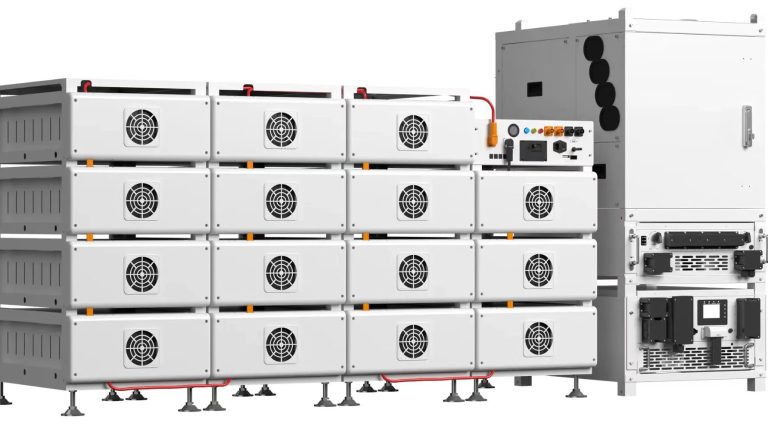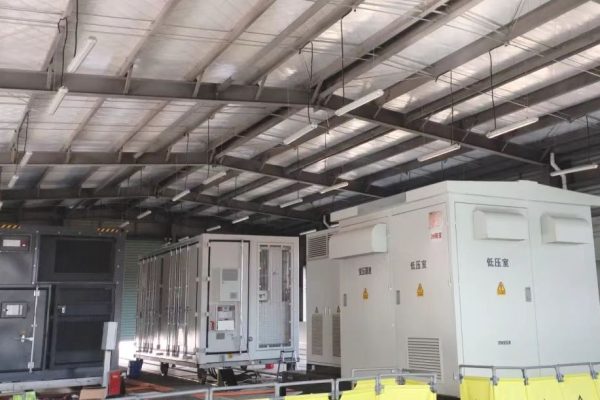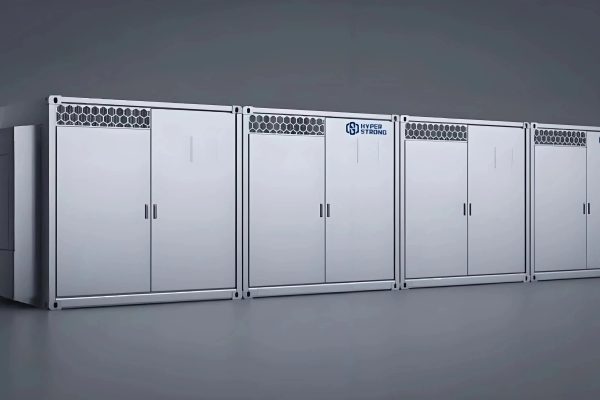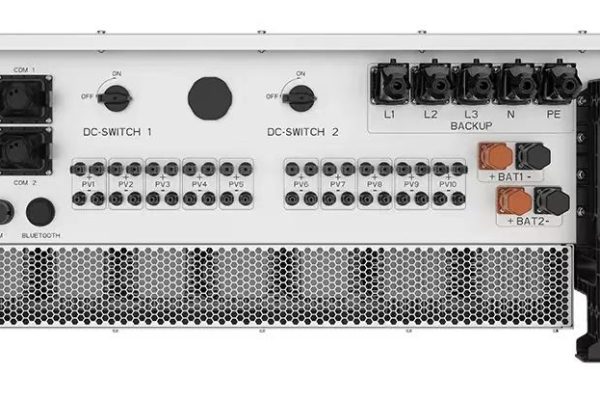When building or purchasing a battery energy storage system (BESS), one of the most common questions buyers face is:
“Should I choose 48V 100Ah modules or go for 51.2V 280Ah battery racks?”
At first glance, both configurations look similar — both are “48V-class” lithium batteries.
However, their voltage, capacity, and system design implications are quite different.
Choosing the right setup affects not only energy capacity, but also installation layout, inverter compatibility, and long-term maintenance.
This article explains the key differences, technical considerations, and practical recommendations for distributors, installers, and engineers designing commercial and residential ESS systems.
1. Understanding Battery Voltage Standards
🔋 48V vs. 51.2V — What’s the Difference?
| Parameter | 48V Battery (Nominal) | 51.2V Battery (Nominal) |
|---|---|---|
| Chemistry | Lead-acid / early LiFePO₄ | LiFePO₄ (LFP) |
| Cell Configuration | 15S (3.2V × 15 = 48V) | 16S (3.2V × 16 = 51.2V) |
| Full Charge Voltage | ~54.6V | ~58.4V |
| Common Use | Legacy telecom, retrofit systems | Modern solar & ESS systems |
The 51.2V format has become the new global standard for lithium iron phosphate (LFP) storage.
It offers slightly higher usable energy and smoother compatibility with new-generation hybrid inverters.
⚙️ In most modern systems, 51.2V = “true 48V lithium” in practice.
2. Capacity Comparison: 100Ah vs. 280Ah
Battery capacity (Ah) directly affects how much energy a single module stores:
| Capacity | Energy (at 51.2V) | Typical Use |
|---|---|---|
| 100Ah | ~5.1 kWh | Residential wall-mounted battery |
| 200Ah | ~10.2 kWh | Small commercial systems |
| 280Ah | ~14.3 kWh | Rack or cabinet type for C&I |
🔋 Energy (kWh) = Voltage × Amp-hour / 1000
A 51.2V 280Ah battery provides nearly three times the energy of a 100Ah module, meaning fewer units are required for the same total capacity.
3. Module Quantity and Rack Layout
Let’s compare two setups for a 20 kWh system:
| Configuration | Module Type | Modules Needed | Pros | Cons |
|---|---|---|---|---|
| 48V 100Ah (4.8 kWh) | Smaller modules | 4–5 units | Easier to lift, flexible | More cables, higher internal resistance |
| 51.2V 280Ah (14.3 kWh) | Larger rack battery | 2 units | Higher energy density, fewer connections | Heavier, requires rack or forklift |
⚙️ For residential or wall-mount systems, 100Ah modules are more flexible.
For C&I or cabinet systems, 280Ah saves wiring and space.
4. Inverter Compatibility
Not all inverters support both voltage ranges.
Before selecting a battery configuration, check your inverter’s battery input voltage range.
| Inverter Type | Typical Voltage Range | Recommended Battery |
|---|---|---|
| Residential hybrid inverter | 40–60V | 48V/51.2V, 100Ah |
| 3-phase commercial hybrid | 120–500V | Multiple 51.2V batteries in series |
| Telecom / UPS | 48V ±10% | 48V 100Ah |
💡 Always confirm with your supplier that the inverter firmware supports your chosen battery BMS protocol (CAN / RS485).
5. Scalability and System Expansion
🔹 48V 100Ah
- Easy to add modules in parallel for higher capacity
- Common in residential and off-grid systems
- Typically supports up to 15–20 parallel units
🔹 51.2V 280Ah
- Designed for rack-mounted or cabinet-based systems
- Supports both series and parallel configuration
- Better for scalable commercial systems (e.g., 200–500kWh)
📈 280Ah modules reduce total connection points — improving long-term reliability in multi-rack setups.
6. Weight and Installation Considerations
| Battery Type | Typical Weight | Handling |
|---|---|---|
| 48V 100Ah | 45–55 kg | Two-person lift |
| 51.2V 280Ah | 85–95 kg | Requires rack or lifting tools |
For installers, this matters: heavy modules need mechanical handling and careful stacking.
Lighter modules offer more flexibility for tight spaces or wall installation.
🧰 If labor cost is high or installation sites are small, modular 100Ah units are more practical.
7. Internal Resistance and Efficiency
Larger-capacity cells (like 280Ah) have:
- Lower internal resistance
- Higher continuous discharge capability
- Better thermal performance
This means:
- Higher round-trip efficiency (~96–98%)
- Less heat during high current operation
- Longer cycle life under heavy load
⚡ For high-power ESS or frequent cycling, 280Ah modules are more efficient.
8. BMS and Communication Differences
Both configurations rely on a Battery Management System (BMS) for protection and communication.
- 100Ah modules often use module-level BMS, easier for simple setups.
- 280Ah rack batteries use centralized or stack-level BMS, suitable for multi-rack systems.
📡 A smart BMS with CAN/RS485 ensures accurate SOC reporting and inverter synchronization.
9. Typical Application Scenarios
| Application | Recommended Battery | Reason |
|---|---|---|
| Home backup (3–10 kWh) | 48V/51.2V 100Ah | Compact, wall-mount, easier wiring |
| Small business (20–50 kWh) | 51.2V 200–280Ah | Rack system, fewer modules |
| Factory or warehouse (100–500 kWh) | 51.2V 280Ah, series/parallel | Efficient installation |
| Telecom / BTS site | 48V 100Ah | Compatible with telecom power systems |
10. Safety and Certification
No matter the configuration, ensure the batteries have:
- UN38.3 transport certification
- IEC62619 / UL1973 for safety
- MSDS for shipping
- Proper cell balancing and overcurrent protection
🛡️ Safety and certification should guide your choice as much as voltage or Ah rating.
11. Cost Comparison
| Specification | 48V 100Ah | 51.2V 280Ah |
|---|---|---|
| Energy (kWh) | 4.8 | 14.3 |
| Cost (approx.) | $650–$800 | $1,600–$2,000 |
| Cost per kWh | $140–$160 | $115–$130 |
| Shipping cost | Higher per kWh | Lower per kWh |
| Best use | Small systems | C&I systems |
💰 Larger 280Ah modules offer better $/kWh value, but may exceed small system budgets.
12. Real-World Example
Case: A distributor in Southeast Asia installs both home and light-commercial ESS.
| Project Type | System Size | Battery Used | Result |
|---|---|---|---|
| 10 kWh home | 2 × 51.2V 100Ah | Easy setup, wall-mounted | |
| 30 kWh shop | 2 × 51.2V 280Ah | Compact rack, lower wiring loss | |
| 200 kWh factory | 14 × 51.2V 280Ah | Centralized BMS, stable operation |
📊 They reported fewer communication faults and higher discharge efficiency with the 280Ah setup.
13. Summary Table: 48V/100Ah vs. 51.2V/280Ah
| Feature | 48V/100Ah | 51.2V/280Ah |
|---|---|---|
| Nominal Voltage | 48V | 51.2V |
| Energy | ~5 kWh | ~14 kWh |
| Weight | 50 kg | 90 kg |
| Handling | Manual | Rack/forklift |
| Scalability | Easy parallel | Series + parallel |
| Efficiency | Medium | High |
| Application | Residential | Commercial/Industrial |
| Cost per kWh | Higher | Lower |
14. Recommendation
- For residential or light commercial projects → choose 51.2V 100Ah.
- For industrial or large hybrid systems → choose 51.2V 280Ah or higher.
- For retrofit or telecom applications → legacy 48V 100Ah may still apply.
⚡ Think in terms of system design, not just voltage labels. The “best battery” fits your inverter, load pattern, and expansion plan.
While both 48V 100Ah and 51.2V 280Ah batteries belong to the same voltage family, they serve different design goals.
Choosing the right configuration impacts energy density, wiring complexity, installation labor, and long-term performance.
✅ Quick Summary:
- 48V/100Ah → compact, flexible, ideal for small systems.
- 51.2V/280Ah → powerful, efficient, ideal for scalable systems.
- Always confirm inverter voltage and BMS protocol compatibility before purchase.
With proper matching and design, both configurations deliver reliable, long-life performance for today’s PV+ESS applications.









